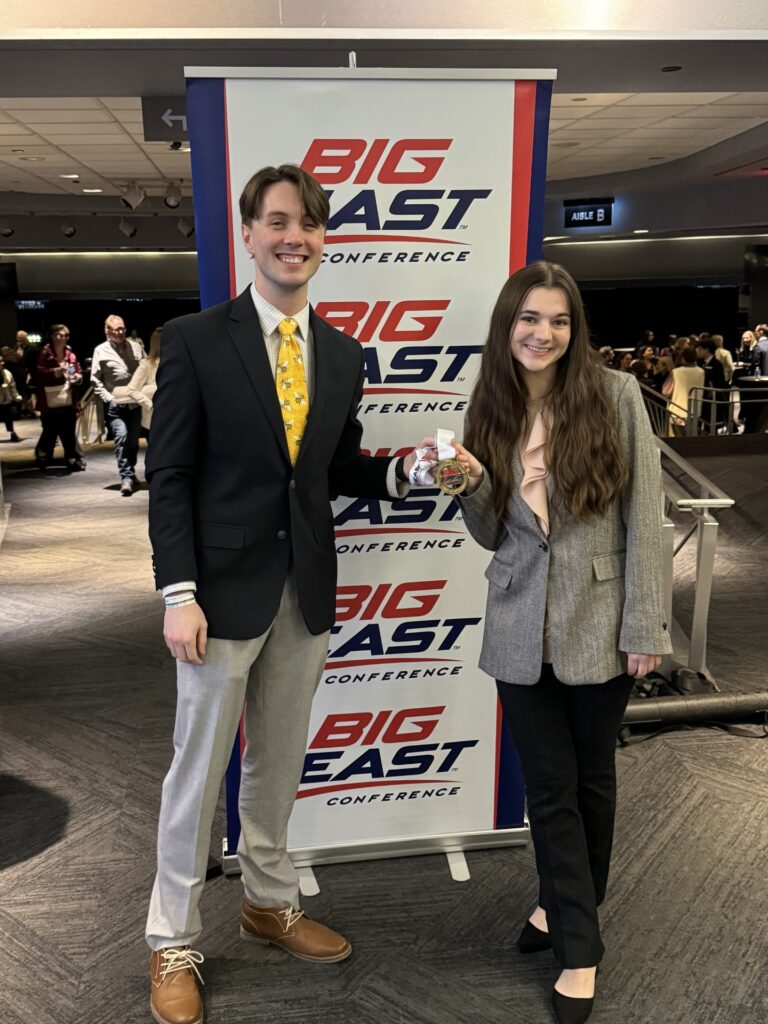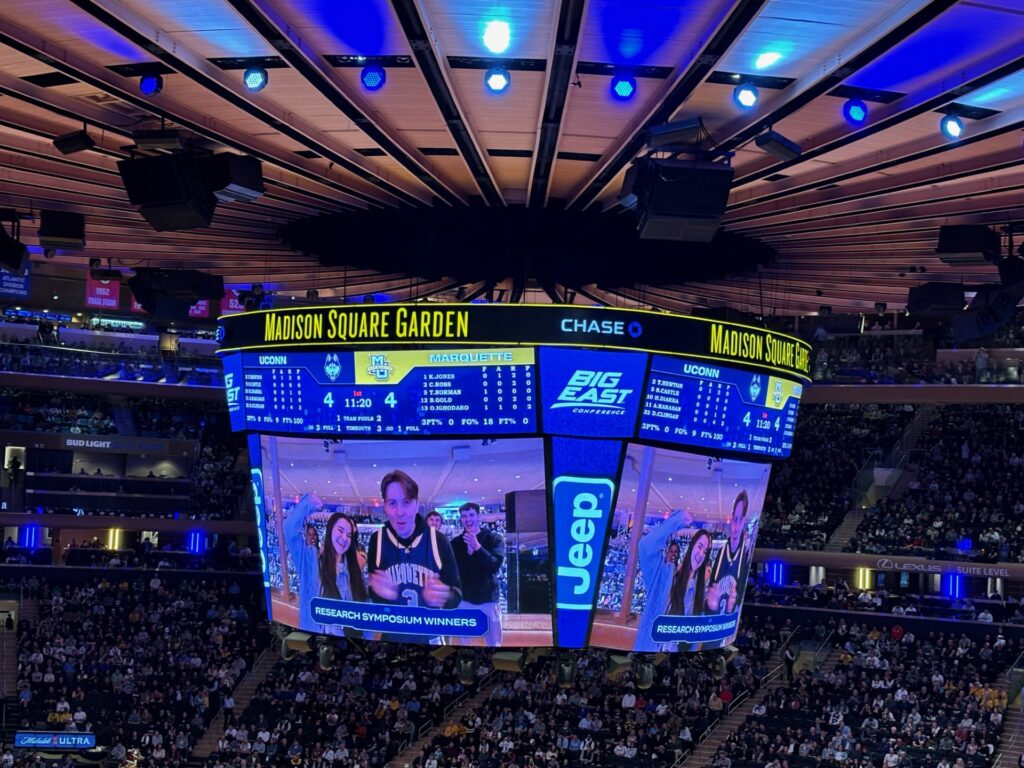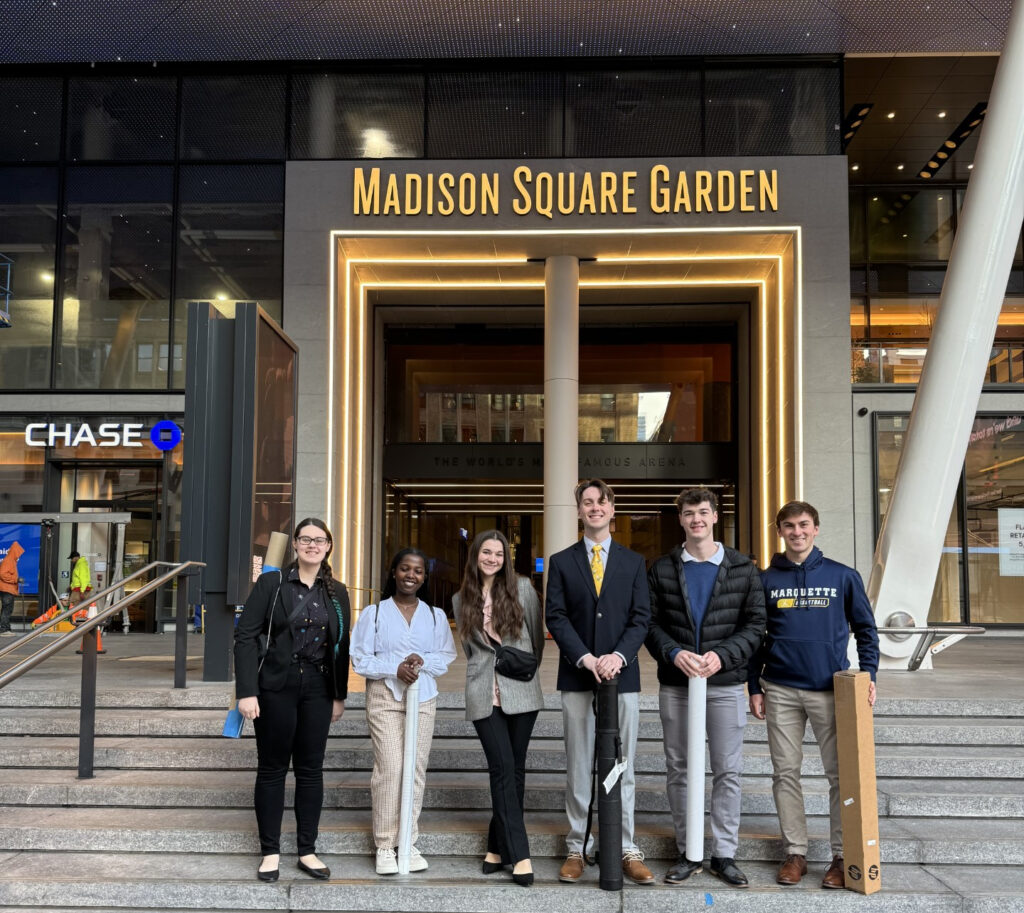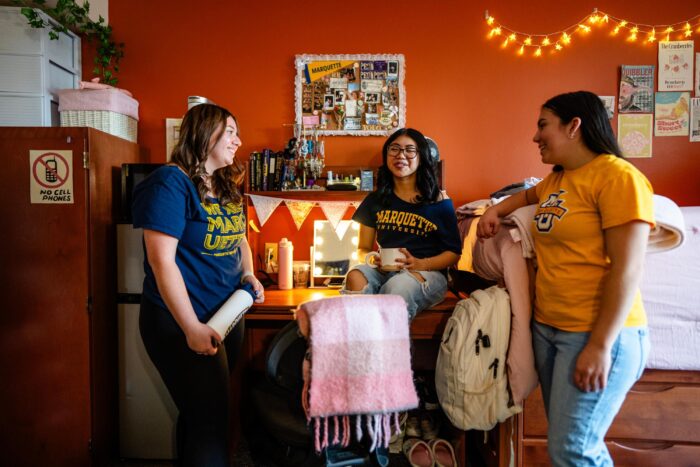
Zac Nelson and Elsa Hahn took first place with their research project, “Social Information as a Catalyst for Collective Task Performance in Honey Bees,” at the annual Big East Undergraduate Research Poster Symposium last Saturday, March 16, at Madison Square Garden in New York City.
Nelson and Hahn, both seniors in the Klingler College of Arts and Sciences, received medals and were recognized during the Big East Men’s Basketball Championship game between Marquette and UConn.
The project also featured graduate student Kerrigan Tobin as an additional author, while Dr. Chelsea Cook, assistant professor of biological sciences served as the faculty mentor.
The winning project is a study of honey bees and how they work together to manage the temperature in their colony, which is funded by the National Science Foundation. Honey bees are social insects that work together to regulate many aspects of their environment, including temperature. Managing temperature is especially important for the development of the baby bees, or brood. Normally, when bees sense hot temperatures, they fan their wings to circulate air and cool the colony and each other. However, if they are alone, they do not fan, even when hot. To understand why being with other bees was important, the research team wanted to see if bees would fan if they could see others fan, but were unable to sense the temperature. To test this, they experimentally prevented honey bees from sensing temperature using chemicals that change the sensation of temperature, like menthol – think your favorite peppermint gum. They found that if bees in a group were treated with chemicals that prevented them from sensing hot temperatures, they didn’t fan. Interestingly, when chemical-treated bees were mixed with untreated bees who could still accurately sense the environment and they started to fan, the chemical-treated bees would start to fan too. This shows that peer pressure is critical influence on behavior – even when it conflicts with how animals sense their world. Although this work is done in a social insect, scientists can use the basic principles to understand how other social animals, like humans, may be influenced by others.

Marquette was represented by five teams and their projects at the symposium. The other participants representing the Klingler College of Arts and Sciences and the Opus College of Engineering were:

Intranuclear signaling pathways involved in norepinephrine-induced regulation of astrocyte gene expression
- Student presenter: Brendan Fosgitt
- Other authors: Jenree R. Maglasang, Michael Szymanski, Doug Lobner
- Mentor: Dr. Paul Gasser, associate professor of biomedical sciences
Mechanical Property Analysis of Cast A356 Modified with Cerium
- Student presenter: Ian Horder
- Mentor: Dr. Le Zhou, assistant professor of mechanical engineering
Symmetry Breaking – A Classic Example of Quantum Interference Captured by Mixed Quantum/Classical Theory
- Student presenter: Kayla Imanzi
- Other authors: Dulat Bostan, Max McCrea, Josh Featherstone, Mark Brouard
- Mentor: Dr. Dmitri Babikov, professor and Pfletschinger-Habermann Distinguished Chair of Chemistry
Surviving the Random Vibration of Rocket Launches
- Student presenter: Nicole Schilder
- Mentor: Dr. John Moore, assistant professor of mechanical engineering
For more information on the undergraduate projects, including abstracts, the symposium program is available online.
The symposium was held in conjunction with the Big East Conference Men’s Basketball Tournament, which ran March 13-16.
Each research project team is comprised of currently enrolled undergraduate students at one of the 11 Big East institutions. Overall, 55 teams competed on Saturday with up to five teams representing each school. Teams of one or two individuals presented their research to judges, who ranked them on a variety of factors including: visual quality content, introduction, results and discussion, presentation style, and responses to questions.


